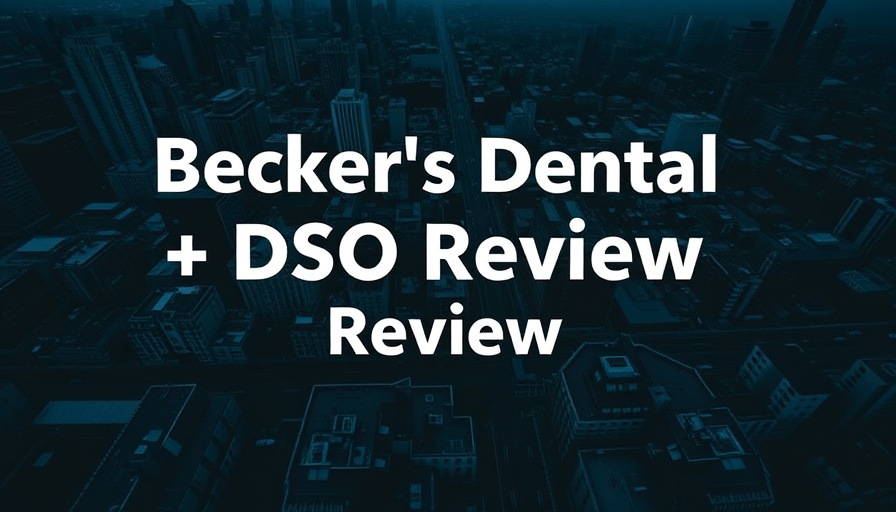
Aspen Dental Does It Again: New Office in North Carolina
In a strategic move to expand its footprint, Chicago-based Aspen Dental opened a new office in Waynesville, North Carolina, on September 4. This growth initiative, under the leadership of practice owner Dr. Joshua Cardinal, DDS, marks another significant addition to Aspen's already extensive network of more than 1,300 practices across the United States.
Aspen Dental has been on a rapid expansion trajectory this year, recently launching practices in several key states including Texas, New York, California, Florida, New Jersey, Kansas, Montana, Nevada, and Washington. This pattern not only emphasizes Aspen's role as one of the largest Dental Service Organizations (DSOs) in the country but also reflects a broader trend among DSOs pushing to meet the growing demand for dental care in various regions.
The Growing Importance of DSOs in Healthcare
As dental care needs continue to rise across the nation, the role of DSOs like Aspen Dental becomes increasingly crucial. These organizations are not just streamlining operational processes; they are also enhancing the patient experience. The ability of DSOs to provide integrated marketing, billing, and administrative support often allows clinicians to focus primarily on patient care. This emphasis on operational efficiency may be why many dental professionals, like Dr. Johnson, are now considering affiliations with DSOs, thereby benefiting from greater resources while retaining control over their clinical practices.
A Closer Look at Aspen Dental’s Expansion Strategy
By targeting specific regions where dental health services are in demand, Aspen Dental cleverly positions itself to attract not only patients but also talented dental professionals. The Waynesville office is a testament to this strategy—an area with a significant population that may previously have had limited access to comprehensive dental services. By filling such gaps, Aspen Dental demonstrates its commitment to supporting community health and well-being.
Unique Benefits for Patients
For patients, the expansion of Aspen Dental means improved accessibility to dental care. With a greater number of locations, patients can enjoy more scheduling flexibility, varied services, and even tele-dentistry options, especially important in the post-COVID-19 landscape. The emphasis on patient trust and relationships is reflected in Aspen's practice model, which prioritizes communication and transparency regarding costs and treatment plans. This trust-based marketing approach leads to more satisfied patients and can significantly enhance practice growth.
The Challenges of Rapid Expansion
While the benefits of DSOs and rapid expansion are clear, challenges persist. As Aspen Dental scales its operations, maintaining consistent quality across all locations remains paramount. Past studies have highlighted the risks involved with rapidly expanding healthcare organizations, including potential dilution of standards and employee culture. Ensuring that each new office mirrors the quality of care found in established locations will be crucial for Aspen’s long-term success.
What This Means for Local Dentists
For solo practitioners like Dr. Johnson, the growing presence of major DSOs poses unique challenges and opportunities. **The collaboration with a DSO can result in increased patient flow**, however, it necessitates staying competitive through exceptional service and community involvement. By emphasizing community ties and personalized patient interactions, local dentists can carve out a niche that distinguishes them from larger organizations.
Future Trends in Dental Care
Looking ahead, the expansion of DSOs like Aspen Dental could signal a shift in how dental care is delivered in the future. As technology continues to play a key role in healthcare, the convergence of telehealth and dental services will likely evolve, creating new pathways for patient interactions. Innovations in artificial intelligence and data management could further streamline operations, providing unprecedented insights into patient care and operations.
In conclusion, the new Aspen Dental office in North Carolina stands as a reflection of both the current and future landscape of dental care in the U.S. For professionals like Dr. Johnson, understanding these shifts brings both challenges and opportunities for growth and patient satisfaction.
 Add Row
Add Row  Add
Add 




Write A Comment